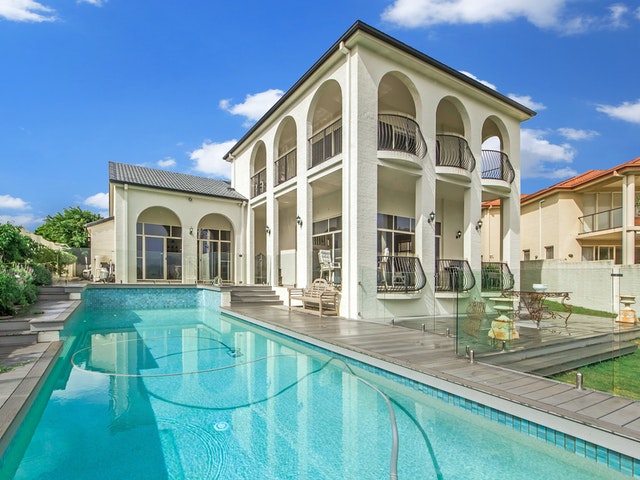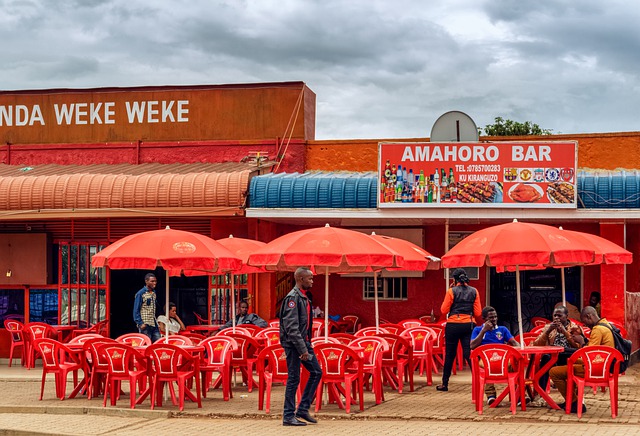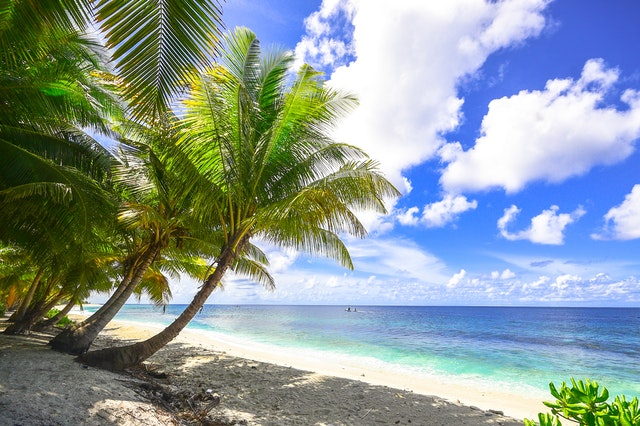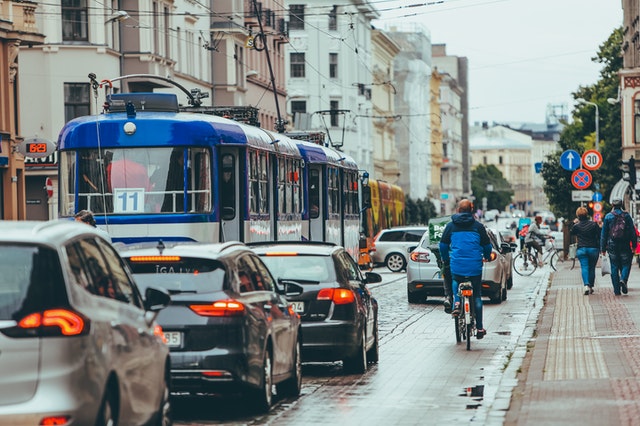The evolution of Tourism in Mauritius (1st part)
Par Tega Chinnan
2019
1
Modern tourism did not start in Mauritius until the 1950s. Tourism was driven by the potential of the island as an attractive ‘3S’ (sun, sand and sea) and the need for economic diversification (Prayag, 2011). In a study by Seetaram (2012, p.314), the first tourists visiting the island during the 1800s as a place for “rest and relaxation” were French visitors. There were no specific tourist facilities and contact between visitors and locals are high. There are also records of the writer and botanist J. H. Bernardin de Saint-Pierre, famous for his 1788 novel Paul et Virginie, visiting Mauritius in 1768, Charles Darwin in 1836 on the HMS Beagle and Mark Twain in 1896.
However, the history of tourism in the island is closely linked with the development of civil aviation and dates as far as back as 1952, with the famous long haul Qantas flight from Australia to South Africa, with stopovers at Cocos Island and Mauritius as transit points. As there were 125 passengers to accommodate, the guesthouse Chateau Mallac was transformed into Park Hotel. South African Airways joined in 1957 and Air Mauritius started its operation in 1967 and this boosted routes between neighboring islands (Seetaram 2012, p.214). Later in 1954, the first beach hotel was constructed in the island and was named Le Morne Plage Ltée, followed by the opening of “X club” in 1955 by the Lyndurst family and Ile de France by George Coombes.
By this time, the concept of beach hotel started to appear followed with the opening of Hotel Merville, Club Mediterranee, Royal Palm and Le Mauricia (Nunkoo, 2007, p.150). In 1954, there were 1,803 tourists visiting the island and by 1964, the number has grown to about 10,000. Since then, the number of tourists has been increasing gradually to reach the figure of 27,650 by 1970; almost a three-fold increase since 1964. The average annual rate of growth for the period 1966 – 70, was about 20.3%.
Unfortunately, despite subsequent reports such as the Meade Report (1967; 1968), one sector which was overlooked or thought not to have the potential to contribute to the Mauritian economy was the tourism sector. It is much credit of private entrepreneur mainly from the sugar industry, which had been inventive enough with the idea of developing the hospitality sector despite the difficult economic situation at the beginning. Before Mauritius became independent in 1968 the industry was left to the initiatives of the private sector, and there was little government involvement in the development and promotion of tourism.
Since then, Mauritius has followed a spatio-temporal tourism development as a “plantation model of tourism development” based on the Caribbean where they experienced colonisation and dependent on agriculture and exports and now tourism. It has to be noted that in the late 1950s, the World Bank also prescribed “tourism development” as a top economic priority for Third World Countries as part of the “modernisation paradigm”.

The economy started to diversify after the National Development Plan (1971-1975) toward other sector mainly tourism, textiles and financial services. The tourism sector is going to develop into the third pillar of the economy after the manufacturing sector and agriculture and will be looked from its journey to growth and development. After the independence, the government took an active role in the development of tourism. The main governing body is the Ministry of Tourism and Leisure, which oversees the work of the Mauritius Government Tourist Office (MGTO) since 1959 to 1996; it’s now the Mauritius Tourism Promotion Authority (MTPA) responsible for promoting tourism.
The Tourism Authority which falls on the aegis of the ministry has among its mandate tourism planning, policy formulation and implementation. The government has offered through the Hotel Development Incentive Act of 1974 many incentive schemes, namely the Hotel Development Certificate Scheme, the Hotel Management Services Certificate, and the Leisure Development Certificate and crown land on coastal areas to boost up tourism. The receipt of a Hotel Development Certificate entitles the holder to a series of concessions such as free repatriation of capital, profits and dividends, a guarantee against nationalisation and availability of loans from the Mauritius Development Bank, with a 12% lending rate. The second scheme offers a 15% corporate tax, tax free dividends for 10 years and exemption from payment of 1/2 nominal registration fees. The third one concerns registration duty payable on purchase of immovable properties.
These offers aroused the multinational companies’ interests. This had a major impact on the way tourism has developed in the island. Hotel development was regarded as one of the main priorities of the government. The Sun Internationals, a foreign group opened the St.Geran hotel in 1975 and La Pirogue hotel in 1976 on the island giving rise to “enclave tourism”. The term “enclave tourism” is generally applied tourism that promotes all-inclusive facilities and services centered on controlling the cultural and physical environment that the tourists experience as part of their stay. Not only there are associated benefits such as a significant source of employment, high quality resort may enhance the overall image whilst also limiting potential negative socio-cultural consequences.
However, enclave tourism has been recognised for leading limited economic links to the community and exacerbates problems of social inequality and disparity. These negative impacts are often the result of a top-down planning approach for tourism development (Nunkoo and Ramkissoon, 2013). Mauritius has also attracted many foreign investors such as Hilton, Radisson and Oberoi among others and local investors were not keen on investing in tourism at the start was mainly due to financial reasons. Hotel development was regarded as one of the main priorities of the government. The government’s policy at that period was at odds with the increased supply of hotel rooms and the number of tourist arrivals was relatively low because of the decline in growth from the major market and also because of inadequate promotion.
Nowadays, compared to many developing countries, in Mauritius local hotel groups such as Beachcomber, Constance Hotels, Lux Resorts and Sun Resort among others hold at least a 70% share of the market with 2,077 and 1,262 rooms respectively in 2012 (AHRIM 2012). The private sector in Mauritius is represented through various sectorial groups mainly the Association des hôteliers et restaurateurs de l’île Maurice (founded in 1973) and the Association of Inbound Operators Mauritius (founded in 1992). It is believed that “Tourism is everybody’s business”: “le tourisme est l’affaire de tous” says the slogan while referring to all the stakeholders in Mauritius.
Since tourist development began in Mauritius, the Government has also adopted a strategy of selective tourism with the accent very much on up-market and service quality. The main objective of the Government has been to continue to attract “low impact” and “high spending” visitors whose economic impacts are acknowledged to be more beneficial to the economy than low spending visitors (Nunkoo and Ramkissoon 2013). Thus, the Mauritian market is almost totally an upscale market which provides high-quality resort accommodation, therefore promoting high expenditure tourism (Seetaram 2012, p.320). The promotion of tourism during the 1970’s as part of the ‘modernisation paradigm’ was to make the island into one of the largest tourist destinations in the Indian Ocean.
With regard to tourism numbers, gaining access to accurate statistic on tourist arrivals date back to only 1970, when government recognised the value and potential of tourism in Mauritius. Tourist arrivals were recorded as 18,000 in 1970 and total tourist arrivals increased almost five-fold between 1972 and 1989, with arrival rising from 48,797 to 262,790 at an average annual growth rate of 15%. Judged by world tourism growth rates, Mauritius was one of the fastest growing tourism destinations, with an annual growth rate of 10 % (World Bank, 1992). A study by Seetanah et al (2011) suggested a near ten-fold increase between 1975 and 2002. Arrivals grew to a peak of 128,360 in 1979 together with a drop in 1980. Main reason for this fall was attributed to the effects of cyclone Claudette in December 1979 which caused bad publicity in the main European market and recession affecting major tourist-generating countries.
In the 1970’s, the industry was in its early years, it went from 16 hotels (961 rooms) to 25 (1009 rooms) in 1972.
Although the statistical data provides a comprehensive figure of tourist numbers, it’s however generally found hard to obtain qualitative historic data on issues such as tourist expectations and motivations, residents’ attitude toward tourism and tourism policies in recognising the historical evolution of tourism in Mauritius. Tourism statistics published by the statistics office does not provide a foolproof measure of the health of the destination nor does it provides data on the attractiveness and perceived quality of the destination (repeat visitors) among others.
The economic boom, in the second half of the 1980’s in Mauritius, appears to be the key to many problems and issues facing its tourism industry. Already during the mid-1970’s, hotel occupancy rates were fairly flat, largely because capacity ran ahead of demand. Heavy investment in tourist accommodations, as a result of the rapid growth of the island’s tourist industry, led to the unprecedented levels of construction in both hotel rooms and non-conventional accommodations. The government’s applied policy at that period was at odds with the increased supply of hotel rooms and the number of tourist arrivals was relatively low because of the decline in growth from the major market, increased in air fare and also because of inadequate promotion.
The hotel industry has seen a dramatic increase from 34 establishments in 1975 (bed capacity of 2,884) to 95 establishment with a bed capacity of 12,359, an overall growth of 182 per cent (MGTO, 1995). Figures from the statistical office published in March 1998 bring the number of registered hotels to 87 at the end of December 1997, with a total capacity of 6,809 rooms corresponding to 14,126 beds. The hotel rooms have continued to grow from 7,267 in 1998 to 12,830 in 2006.
However, the occupancy rates of available bed places has shown a decreasing trend for a number of years, from 63% in 1997 to 55% in 2003. In other words, the hotel sector of Mauritius was not successful in exploiting the available capacity. An effort was made in the 1990s to boost the tourism sector in the country. The emphasis of the campaign was on the total tourism product concept, in terms of the friendliness of the host population, the shopping experience, the quality and variety of the food and the relative safety of the visitors.
Moreover, hotel occupancy rates were declining but the hotel rates have increased significantly in those years. In the master plan for Air Transportation prepared by the Netherlands Airport Consultants released in 2004, an explanation AHRIM was the pricing of rooms in Euro. They suggest this increase in room rates should be attributed to the appreciation of the Euro vis-à-vis the Rupee. The different market conditions between the peak and the off-peak season was another reason. The annual increase in overall room rates was partly attributable to the increases of room rates during peak season. The off-peak season rooms’ rates however do not receive sufficient demand volume, resulting in an overall decrease in occupancy rate.
Other arguments were the decreasing length of stay per tourist, all year around operation and payroll, and cost due to hotel renovations. The market conditions for the demand and supply of hotel rooms are therefore not that flexible and competitive enough as claimed by the private sectors. An indication that the intended strategy was not followed is that the current major hotel development takes place in a time that only 55% of the room capacity is used and tourist arrivals are stagnating (AHRIM, 2009). Consequently, to ensure a good working relationship with the private sector, the government adopted a ‘Hotel Development strategy’ in 2009 to favours the construction of only 4* and 5* hotels to reinforce the portfolio analysis of Mauritius product and in an attempt to generate traffic flows belonging to the highest spending segments. A Planning Policy Guidance for coastal development was also introduced.
Tourism arrivals increased from 681,648 to 761,063 between 2002 and 2005 and an increase of nearly 200,000 tourist arrivals between 2006 and 2007. There has been a decline in the number of tourist arrivals for the year 2009 attaining 871,356. This represents a decrease of 6.4% over the figure of 930,456 registered for the year 2008. The dramatic decline in tourist arrivals in 2009, however, was a reflection of the impact of the Eurozone financial crisis and chikungunya outbreak. From 2010 to 2014, the tourist industry grew at an average of 2.8%, 2 percent under the world average. Moreover, a study by Surrey Research Group UK (2000) carried out a quantitative forecast estimates tourism arrivals to reach 1.2 m by the year 2020 in Mauritius. This Holt exponential smoothing forecast was based on a “linear trend in arrivals unconstrained growth in the supply facilities, a medium range occupancy rate of 60%, and average length of stay of 8 nights” (AHRIM, 2006:7). The research concluded that the greatest challenge facing the industry for the next two decades is to maintain its image of high quality destination as a “long term viable option”.
Tourism Planning
The first Plan for Social and economic Development (1971-1975) published by the government gave significant importance to the tourism industry as a means of diversifying from over-reliance on sugar exports and to resolve the problem of high employment. Promotion for long-haul, high-spend tourist has been the objectives of the four year plan. Mauritius was promoted as a luxury destination and key objectives was attracting the classic tourist typologies of ‘wanderlust’ and ‘sunlust’ as a key means to ‘sustainable’ tourism (Seetaram 2012, p.320, Nunkoo and Ramkissoon 2010b, p.39). The findings from the plan also advocates a ‘human dimensions’ to tourism planning however it was not specific how this would be implemented.
Furthermore, despite efforts to reduce unemployment, the crisis had worsened. The population did not have the training and skills to work in the industry and any training program had to be enlisted with the private sector. The plan received press attention because it criticised the ideology of ‘development’ was an ongoing process. It is also important to notice tourism as a source of job creation, the governing body of tourism during that era was also that of employment. Subsequently, the role of Tourism ministers evolved to Tourism and Leisure, the Ministry of tourism and External Communications and recently Ministry of Tourism. With the degradation of the environment in which tourism operates, combining future tourism minister purse may be wise to some degree to contemplate.
The White paper on Tourism published in 1988 stressed even more the importance of a ‘social function of tourism’ highlighting social preservation next to ecological and cultural preservation. It advocates that ‘tourism policy should guarantee in the future a reduction of social disparities and broaden social advantages for the benefit of all social strata’ (Ministry of Employment and Tourism 1998, p.6). Throughout the 1980’s and 1990’s, Development Plans failed to examine the social impacts of tourism and did not include a social assessment or a measurement for developments. A ‘tourism ceiling’ was approved in the White Paper on Tourism but there was a pattern of increasing tourism arrival by modifying the ‘tourism ceiling’. However, findings from Cleverdon Steer Report (1992) illustrated how the government believed that a ‘tourism ceiling’ was a sufficient means of environmental sustainability (Cleverdon Steer 1992, p29, 32).
The Cleverdon Steer Report (1992) detailed that the visitor carrying capacity would be established through management plan, zoning plan and monitoring procedures of the ecological environment (Cleverdon Steer 1992, p58). The report criticised previous National Plans as providing “very little hard evidence on the sociocultural consequences of tourism… most studies have focused on the economic aspect” (Cleverdon Steer 1992, p. 1-11). Participative planning was recommended ‘at each level – national, district, village’ with the objective of ‘improving resident’s participation in tourism planning and the outcome of its development’ (Cleverdon Steer 1992). However, it was only in the early 2000s, recognising the tourism product and positioning of Mauritius were in-adequate in sustaining tourist numbers. A National Tourism Development Plan (NTDP 2002), funded by the European Union in 2000, was commission to help to the diversification and rejuvenation of the industry (Deloitte and Touche, 2002) and a target of 1.5 million tourists were made.
Tourism Strategies in Mauritius
The National Tourism Development Plan (NTDP 2002) was the basic document for the current tourism strategy of Mauritius. The overall vision statement of the national tourism strategy is to make Mauritius: “A leading and sustainable island destinations.” The national strategy of is also guided by the following mission statement: “To develop and champion tourism activities so as to build the sector into a key engine of growth and to make of Mauritius the best island destination in the world.”
The NTDP 2002 distinguishes three basic options for tourism development:
Tourist numbers
Quality and the mix of accommodation
Diversification of market segments and accommodation stock.
The general objective as indicated in the strategic paper is to optimise socio-economic benefits from the tourism industry for the people of Mauritius. Parallel to that objective it is intended to make tourism a positive force for environmental conservation and for social-cultural enhancement. The national tourism strategy emphasises on low impact and high spending tourism. Selective, up-market, quality tourism is favoured, and although such tourism is not the only type, it constitutes the major segment of the market (Nunkoo and Ramkissoon, 2013). The NTDP 2002 has brought a more integrated and comprehensive approach to tourism in its internal environment, mainly among different tourism Stakeholders.
The NTDP 2002 concludes that selective up-market will be favoured. The Hotel Development strategy of 2009, have be sought to reinforce this positioning by focusing of only four and five-star hotel developments and the industry went through an extensive upgrading of hotel facilities with a regulated hotel classification. Other policy such as ‘Ile Maurice Durable’ was launch in 2008 to promote sustainable development.
Despite the ‘low volume and high quality’ hotel sector, there are also regional and domestic markets that seek inexpensive accommodation, for example the French coming through Reunion Island. This market has developed through the ‘informal’ sector and will be regularised as indicated by the NTDP 2002.
The third option, the NTDP 2002 discussed, is the opportunity for diversification. Diversification will add more to the product portfolio and make the destination more attractive, but it has to be achieved without disturbing the core market segment: tourists with high expenditure profiles. The NTDP 2002 suggests diversification into a number of market segments, like 50+ groups, conferences and exhibitions (M.I.C.E segments), medical tourism, golf tourism and other special events. Next, there is a need for further diversification and improvement in the (inland) tourist attractions, among which eco-tourism and cultural-tourism. The government published a report entitled ‘Mauritius National Export-Cultural Tourism Sector 2017-2021’ highlighting a strong case for a strong case for cultural tourism.
The rich history, multicultural heritage, the local folklore, local cuisine and as well as cultural heritage sites gives Mauritius a sense of uniqueness and a significant competitive advantage. It has to be noted that two Mauritius sites, namely Aapravasi Ghat in Port Louis and Le Morne Cultural Landscape, are included on the UNESCO World Heritage List since 2006 and 2008 respectively. Importantly, Participatory planning process was a noticeable change in government consultation for these projects but also a prerequisite requirement for maintaining the site’s WHS status (Prayag 2015).
In addition, the report proposed (NTDP 2002 2002: E/8) the following strategic actions if Mauritius is to maintain its positioning as a high quality tourism:
Continue to focus on selective tourism – ‘High spenders – Low impact’
Continue to focus on scheduled services and quality air access
Make Mauritius an even higher valued added, higher quality tourism destination.
Make ‘personal service excellence’, one of our competitive advantages, a key selling proposition for the destination.
Establish a unique destination image for Mauritius
Broaden Mauritius product portfolio by regularizing the informal sector and at the same time raising standards and enhance the overall quality positioning.
Diversification of the Tourism Product
The NTDP 2002 also emphasizes the introduction of clear land-use zoning and physical development plans to permit a more efficient and sustainable use of land resources. Six tourism development zones have been identified for which the NTDP 2002 has formulated a specific development and planning strategy. The ‘Northern Tourist Zone’ is the main tourist centre. The focal point is to maintain and increase the broad range of accommodation type whilst upgrading the quality. The ‘South West Tourist Zone’ is indicated to allocate a wide range of accommodation types. The strategy is to maintain the luxury and high quality hotel development and at the same time upgrade the informal sector through license control.
The development focus for the ‘Eastern Tourist Zone’ is the luxury and quality hotel range. This implies a strategy of maintaining the luxury and high quality hotel development through control and environmental protection and improvements. ‘Mahébourg Tourist Zone’ is a south east zone for small scale mixed development. The strategy emphasises to maintain luxury hotels, whilst making environmental protection a priority. Another spearhead of the strategy is to stimulate high quality small hotel development. The philosophy for the ‘South Coast Heritage Zone’ is to maintain a rich environmental reserve of scenery and natural features of the island. This strategy is formulated in order to protect and maintain the rich environmental reserve of scenery and natural features. ‘The South West Nature Zone’ is meant for improvements in ‘green activities’ and not for hotel developments. The ‘Black River Gorges National Park’ is also incorporated in this nature zone.
Recent proposed construction of a hotel in 2017 at Pomponnette in the south has caused much disapproval among the local residents. Past academics studies about local residents’ attitudes towards tourism in Mauritius (Nunkoo and Ramkissoon (2011), Prayag et al, 2010) were generally positive but now civil society coalition such as ‘Aret Kokin Nu Laplaz’ and ‘Plaform Sov Nu Laplaz’ are expressing concern about beaches being converted into further hotel developments which will impinge on the 45 km of public beach of the 333 km of coastal area and be to the detriment of local resident access to leisure. Furthermore, it was noted that local residents have little input in Tourism planning and development in Mauritius (Nunkoo and Ramkissoon 2013).
The NTDP 2002 for Mauritius was tasked to satisfy other objectives such as social responsibility and good governance. Consequently, one of the objectives is to make tourism a positive force for environmental conservation and for social-cultural enhancement. The NTDP 2002 suggests a framework for physical planning and development control. In spite of this, the NTDP 2002 didn’t define the limits of acceptable environmental change. This is the important first step towards sustainable tourism. The other steps are: inform the tourists, monitor, and measure and manage and re-invest the yields to improve the environment. However, none of them is incorporated in the NTDP 2002; the NTDP 2002 just gives quantitative objectives for a growth in tourism as opposed to yield from visitors (Prayag 2011). This is a shortcoming, because only then all tourism developments and their spatial and environmental consequences could have been considered in relation with each other.
Environmental Impact Assessments are done without notice of the context with other developments. Previously, hotel developments occur in a largely ad hoc fashion and it was expected that this could be a danger for the island’s environment. However, new legislations were introduced and hotel developers have now more corporate and social responsibilities. Protection of the physical environment was an integrate part of the island tourism strategy. Since 1997 two marine parks were proclaimed: The Blue Bay Marine Park in the south of the island and the Balaclava Marine Park in the north to raise the awareness of the local population as well as foreign visitors on the need to protect marine life. Other sites around the island will also be transformed into marine parks or fishing reserves. They include the small islets, Isle Plate and Coin de Mire, in the north. Careful environmental planning and design are essential to prevent the island from an urban sprawl of hotel developments, which would destroy its strengths. Nevertheless, tourism could also be a locomotive for improvement of the whole environment (physical and social), if the yields are invested in environmental planning and design, flora & fauna, water management, facilities for the inhabitants, SME, etc.
The Tourism Development Plan in 2002 also recommended a national logo to be used as an icon for Mauritius tourism marketing which will reflect a new dynamism and thrust of the private and public sector in a combined marketing effort. Since the end of 2009, Mauritius with its slogan “Mauritius, c’est du Plaisir” & “Mauritius, is a pleasure” have taken branding in a wider context through nation branding which concerns the country’s whole image, covering political, economic, historical and cultural dimensions. The challenge of maintaining Mauritius destination image in alignment with targeted visitor groups whilst effectively enhancing its competitiveness is critical to the success. How Mauritius image is being perceived and projected as unique to potential tourists in order to stimulate desirability, increasing so today where all form of media, from conventional to social, play a major role in destination image.
A problem is that social media is generally uncontrollable and unpredictable; despite it has potential immense coverage. One can therefore argue that image is an essential component, along with other destination tourism supply. New Zealand, for example, its unique slogan “100% PURE NZ” is used worldwide. However, the used of dual language of the Mauritian slogan needs to be adapted accordingly. The emergence of electronic media distribution systems may have a profound effect on the performance of the MTPA, as the emphasis on print material lessens, and more people are able to access instant travel, information, travel blogs and booking in an electronic form.
The main social media platform of the MTPA is Facebook, YouTube and Instagram for all market and Weibo, WeChat and Youku for China. However, the creation of a unique content for its promotion remains a challenge despite a survey by Prayag (2012) who found that the ‘paradise lost’ image is still successful among European tourist (Prayag 2012, p11). The need for MTPA to justify its existence and to prove a return on investment is more critical today than ever before during a period of accountability and good governance. The expenditure cost in marketing budget by each individual’s hotel groups and that of the government needs to be scrutinised to measure overall marketing performance of the destination. However, to best manage the complexity among stakeholders is therefore acceptable that the destination need to bring together all parties to collaborate rather than complete, and to pool resources towards a unique marketing campaign.
In his speech ‘setting the stage for Robust Growth’ the Ministry of Tourism and External Communication proposed revisiting the tourism strategy. As a result, the ‘Assises du Tourisme’ was first organised in 2006 to look into the issues and challenges facing the tourism sector. Principles of Sustainability was also highlighted in the NTDP 2002 and reinforced in the ‘Tourism Sector Strategy Plan (2008-2015) financed by the European Union and prepared by Emerging Market Group to overview the tourism sector and in 2010 the government suggested the following points to further enhance tourism development. A revamping of the tourism policy was announced with further approach to ‘Air Access, Marketing Strategy and Product Development.
Furthermore, with the decline in the sugar sector over the years, large extents of sugarcane land have been converted in Integrated Resort Scheme (IRS) and Real Estate Scheme (RES) developments since 2002 where high class villas are being sold to foreigners at a minimum cost of US$ 500,000 (Board of Investment, 2009). These villas are a recent form of enclave tourism as some owners might put them on rent. Nonetheless, its economic viability to the local tourism revenue needs to be questioned as an informal sector and is not regulated.
Protection of the physical environment is yet another integrates part of the island tourism strategy. The Blue Bay Marine Park in the south of the island and the Balaclava Marine Park in the north were proclaimed to raise the awareness of the local population as well as foreign visitors on the need to protect marine life. However, recent investment in aquaculture and Mariculture (floating cages in the lagoons) by the Ministry of fisheries has caused many controversies among the hoteliers. They argued that these farms will attract sharks and hereby affecting the hotel industry. It will be interesting to see the next move of the Ministry of fisheries after a court judgment in favour of AHRIM. The sustainability of the destination is suggested as one of the key aspects of the current Ministry of Tourism, Mr Anil Gayan. He suggested in a Strategic Paper Tourism in Mauritius: A new spirit for a new mandate (2015) the idea of ‘insufflate in the tourism sector a renewed sense of place’. The goal was to offer an enriched tourist experience highlighting the authentic city of the destination (Ministry of Tourism, 2017).
A second “Assises du Tourisme” was held last year to reflect on the challenges facing the industry more than 10 years after to discuss the future of the industry. More than 240 tourism stakeholders from the public and private sector participated in the Assises to reflect on the challenges facing the industry. A series of recommendations was put forward by the public and private sector. However, the successful implementation of sustainable tourism will require cooperation by a wide range of different stakeholders, tourists and most importantly the host communities. The present strategy however failed to recognise the ‘community element’ in mission statement. One of the key elements of sustainable development is a holistic viewpoint, whereby it is recognised that “tourisme est l’affaire de tous” and the best chance of success is through symbiosis. Without community support many initiatives are bound to fail, particularly where local involvement is an important element.
Future strategy for tourism of Mauritius should be that of a ‘community’ drive in addition to the relevance of sustainable value creation to ensure long-term competitive advantages, as the success of tourism in Mauritius can be attributed to the hospitality of its people. Tourism is a powerful way of representing the world, people and places. The focus on hospitality experience has created reputations of the destination but it is not the main attraction. It is mostly our sense of hospitality, the ‘legendary smile of its people’ more than our beaches participated in making Mauritius one of the world references in tourism. These intangible elements of the tourism product have contributed to the success of Mauritius. So far, the hospitality industries are the main actors in tourism sitting on many governments tourism boards, but as recognition to its people, our tourism strategy mission statement should imply: To develop and champion tourism activities so as to build the sector into a key engine of growth ‘for the benefits of its inhabitants”.
When considering tourism as a development strategy, government must consider how tourism will contribute in a sustainable way to community well-being. Besides, tourism thinking, writing and how it should be practiced have changed. In tourism studies, Jafari’s notion of ‘Adaptancy Platform’ (2001:31), referring to the presentation of tourism as a provider of employment and income has moved to that of ‘Cautionary’, ‘Adaptancy’ and now the ‘knowledge-based platform’, whereby community-focused forms of tourism are now proposed as an alternative to the excesses of conventional tourism. The tourists themselves have also changed and the ‘new tourists’ want to experience Mauritius differently than their parents’ did.
Tega Chinnan
MA in Tourism Development- St Mary’s University











